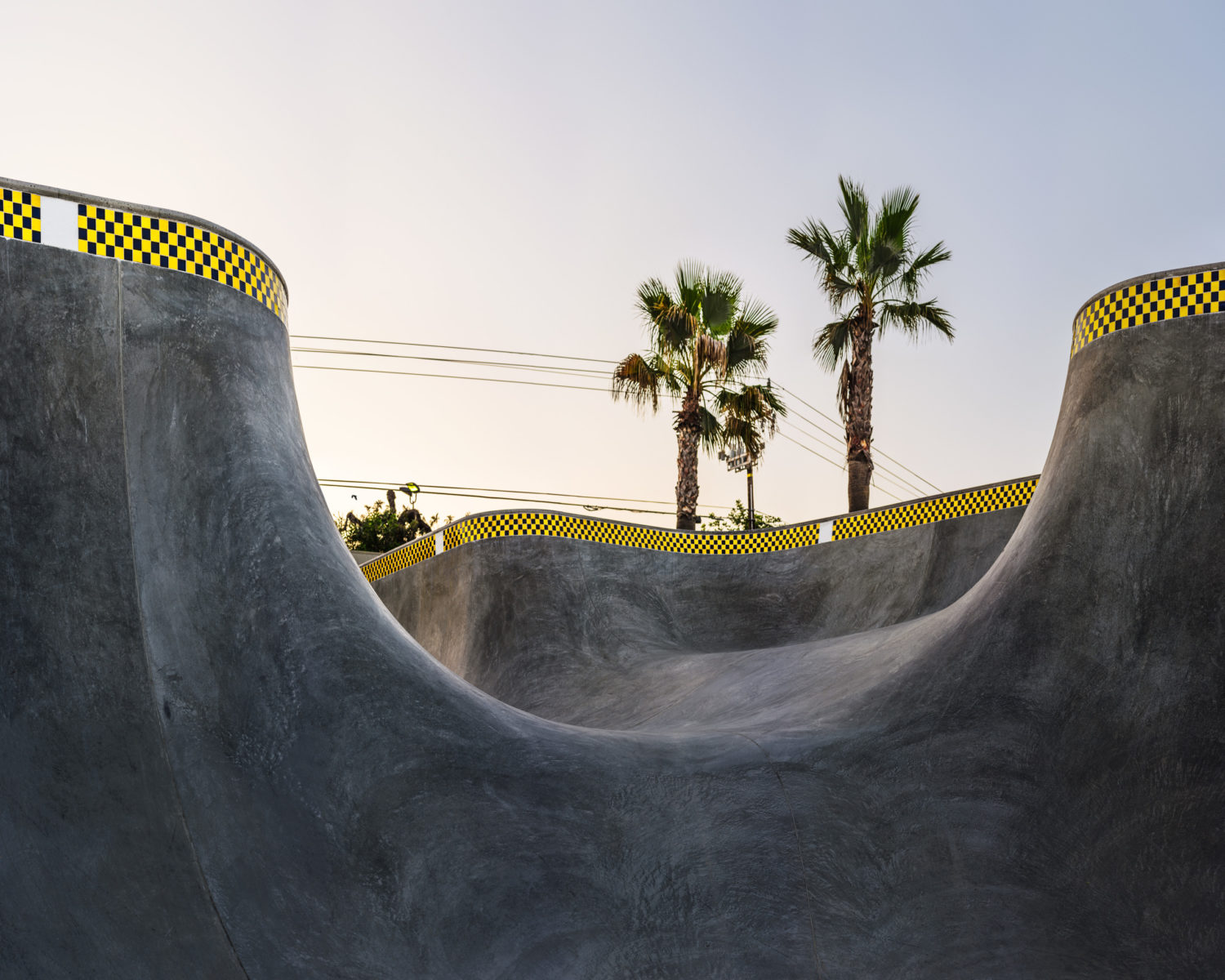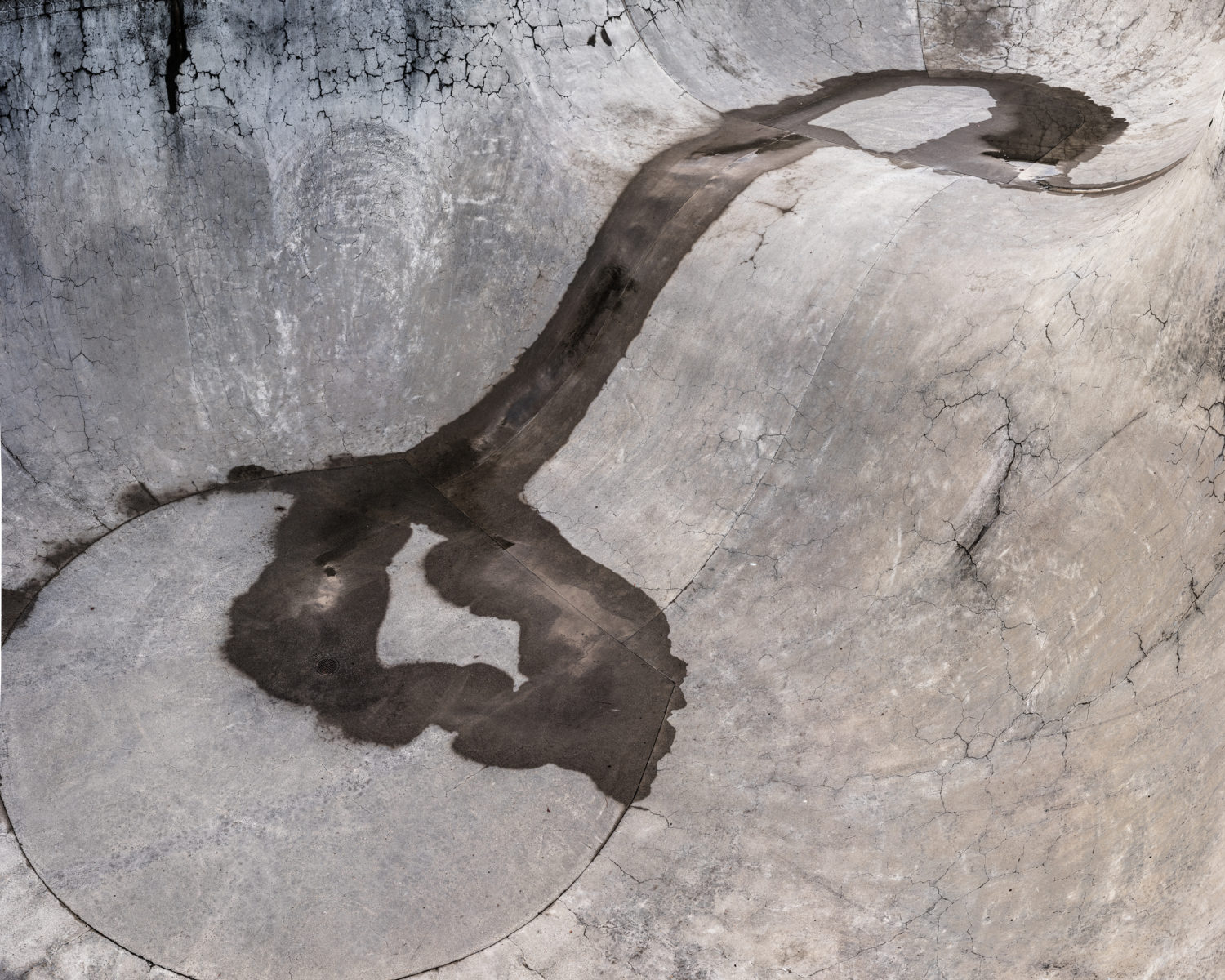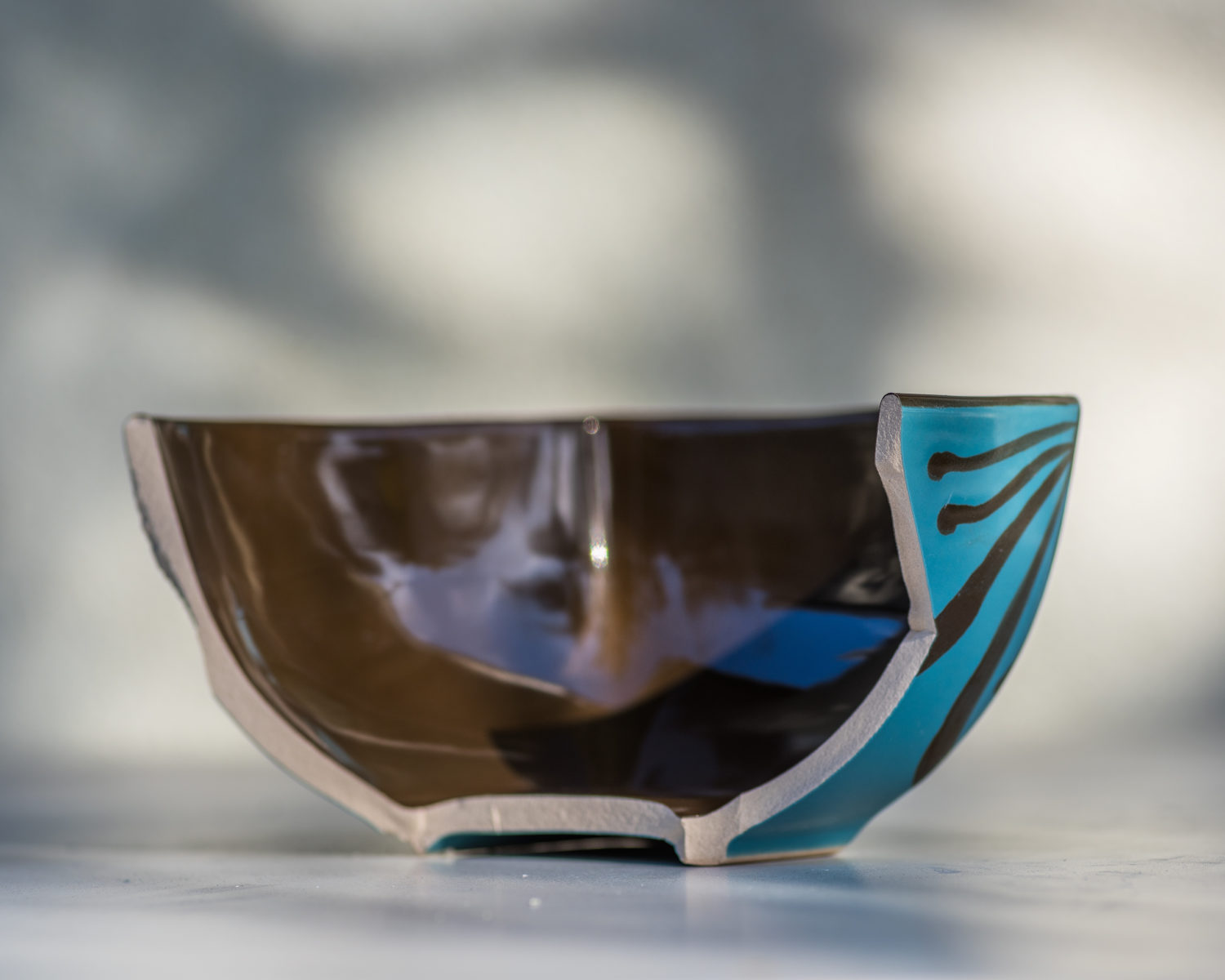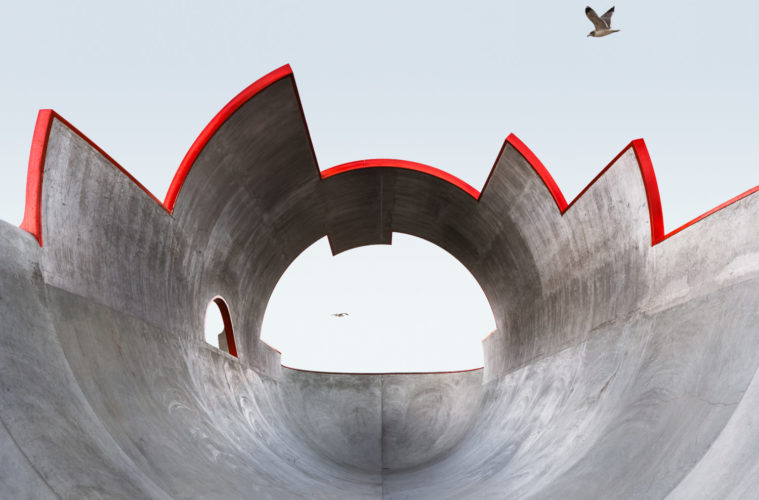Take a cursory look at the large artworks hung on the walls in “Empty Vessel – Amir Zaki” at Orange Coast College. The pictures might be architectural drawings from a science fiction novel.
The images display broad expanses of concrete, which has been seemingly sculpted into circular, clean cut and even jagged forms, with several shapes echoing the hills and mountains beyond. The viewer might wonder if these 22 compelling pictures, some including tropical foliage and sharp shadows, are drawings or paintings inspired by the artist’s fertile imagination.
Yet a conversation with Tyler Stallings, exhibition curator and director of the college’s Doyle Art Pavilion, reveals that these are high-resolution photos of vacant California skateparks. All images are devoid of people and photographed in the early morning, when the shadows are deep and most skateboarders are still asleep.
Stallings explains that Zaki, the photographic artist who created these archival pigment prints, all titled “Concrete Vessel,” shot these by employing a “GigaPan” mechanism, connected to his camera. This device allows him to take several dozen photos of each particular scene and to then, “stitch them all together digitally to create a single, highly detailed image,” as the curator writes.

(Courtesy of the artist)
Stallings adds, “The resulting series have wide-angle views that are not affected by the warping edges of a wide-angle lens, since each individual image is slightly telephoto and the GigaPan moves side-to-side in rows, up and down in columns, capturing a large grid of images within the programmed dimensions of a plane.”
The California skateparks chosen for these photos are in Chino, Chino Hills, Costa Mesa, Fillmore, Fontana, Lake Forest, Rancho Santa Margarita, San Jose, San Luis Obispo, San Diego and Solvang.
The Chino Hills skatepark photo has an otherworldly vibe, as it contains broad expanses of flat concrete, evoking scenes from the 1960s film, Planet of the Apes. The Fillmore park is more down-to-earth, with its inclusion of large potted plants atop a sidewall. The photo of the Solvang skatepark features a walkway, concrete railings and stairs, suggesting a pathway from a classic European park. Other images in this series include jutting structures, rounded, sculptural characteristics and semi-triangular shapes.

(Courtesy of the artist)
Yet “Concrete Vessels” comprises only part of this exhibition. The remaining 11 images from Zaki’s “Broken Vessel” series — photos of shards from broken ceramic, earthenware bowls, cups and vases — complement the skatepark pictures. The source material for both series is clay from the earth — or concrete in the first series, and ceramic clay in the second one. The pictures represent a macro view of our world, embodied by the expansive skateparks, alongside a smaller or micro vision, represented by the still lifes of the shards. Combining these two series provides an artistic vision of sculptural elements found in surprising places.

(Courtesy of the artist)
Regarding the “Broken Vessel” series, Stallings explains that Zaki purchased inexpensive ceramics from places like thrift stores, and later dropped each item onto his patio. He then selected broken ceramic shards that were both interesting and that “might evoke aspects of the skateparks in miniature form,” as the curator writes. Shattering the pots and then creating beauty from them is akin to the concept that destruction can lead to transformation, and to the quote, “That which does not kill us makes us stronger,” often credited to Friedrich Nietzsche.
While the photographic process employed for the “Broken” series is less complex than the “Concrete” one, Zaki used creative methods to shoot the ceramics, including using natural light filtered through palm tree fronds. His ambiguous “Broken Vessel” titles for all of the photos encourage the viewer to determine her/his own conceptual and sculptural perspective for each art piece. Further, while most people tend to discard broken crockery, Zaki’s photos evoke abstract sculpture and even birds and sleeping animals.
With both series, he starts with ordinary sites and objects and transforms them into extraordinary artworks by using illusionistic photography and unusual angles. If one goal of art is to enable viewers to perceive life and the environment in an enlightened manner, the artist has succeeded. If a second goal is to provide viewers with visions of beauty in the everyday world, he has also accomplished this.
Amir Zaki, a yoga instructor and reportedly a Zen Buddhist practitioner, combines digital and analog photography in his work. He creates ominous artworks that tell viewers to look for the beauty in the world around them. And if they think they know what is really there, look again.
“Empty Vessel — Amir Zaki” is on view through December 5, 2019, at Orange Coast College’s Frank M. Doyle Arts Pavilion; Mon. – Thu., 11 a.m. – 5 p.m. and first Saturdays, noon – 4 p.m.: free. orangecoastcollege.edu/academics/divisions/visual_arts/Arts_Pavilion/Pages/default.aspx

(Courtesy of the artist)
Advertising disclosure: We may receive compensation for some of the links in our stories. Thank you for supporting Irvine Weekly and our advertisers.

